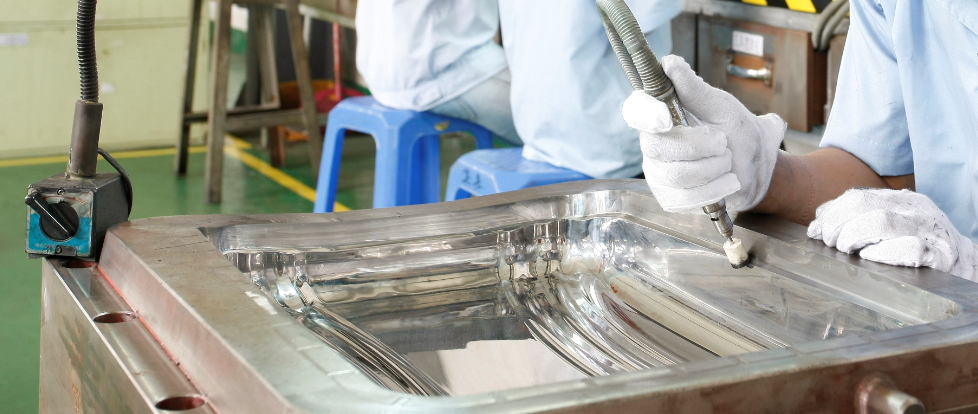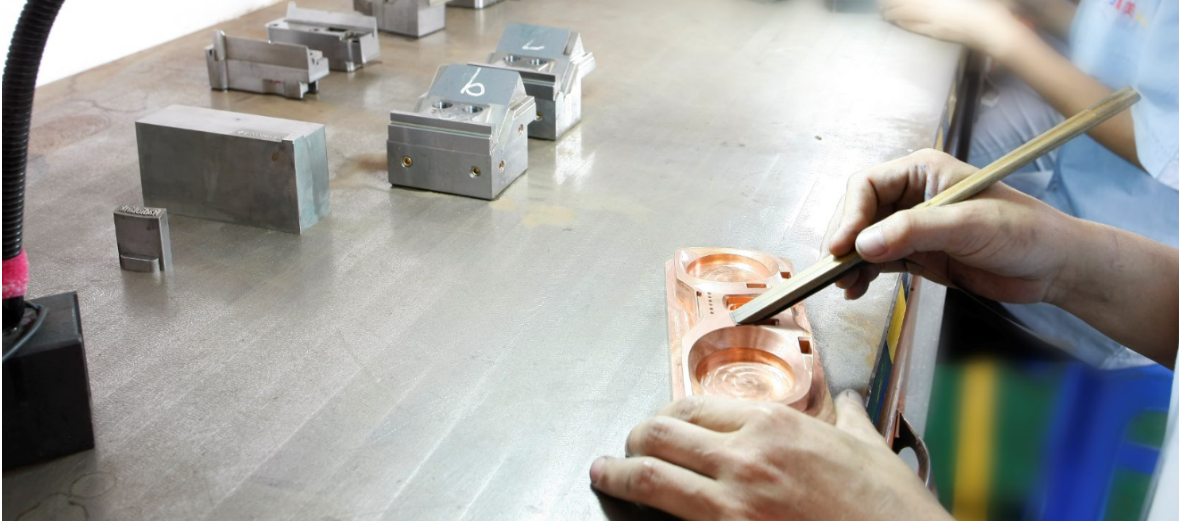In the production process of injection molds, polishing is a very important process in the production process. After all, with the increasing use of plastic products, people will also have higher and higher requirements for the appearance and quality of plastic products. Therefore, for our injection molds The surface polishing quality of the cavity should also be improved accordingly, so let's take a look at several common polishing methods in injection molds!

2. Chemical polishing
Chemical polishing is to make the surface microscopically convex part of the material in the chemical medium dissolve preferentially than the convex part, so as to obtain a smooth surface. The main advantage of this method is that it does not require complex equipment, can polish complex shapes, and can polish many jobs at the same time, with high efficiency.
3. Electrolytic polishing
The basic principle of electrolytic polishing is the same as that of chemical polishing, that is, by selectively dissolving tiny protrusions on the surface of the material, the surface is smooth. Compared with chemical polishing, the effect of cathode reaction can be eliminated, and the effect is better.
4, ultrasonic polishing
Put the workpiece in the abrasive suspension and put it together in the ultrasonic field, relying on the oscillation effect of the ultrasonic, so that the surface of the abrasive is ground and polished in the workpiece, and the macroscopic force of ultrasonic processing is small. It will not cause deformation of the workpiece, but it is difficult to make and follow the tooling. Ultrasonic processing can be combined with chemical or electrochemical chemical methods.
5, fluid polishing
Fluid polishing is based on telling the flowing liquid and the abrasive particles it carries to wash the surface of the workpiece to achieve the purpose of polishing. Common methods include abrasive jet processing, liquid jet processing, and hydrodynamic grinding.
6, magnetic grinding and polishing
Magnetic abrasive polishing is to use magnetic abrasives to form abrasive brushes under the action of a magnetic field to grind the workpiece. This method has high processing efficiency, good quality, easy control of processing conditions and good working conditions.